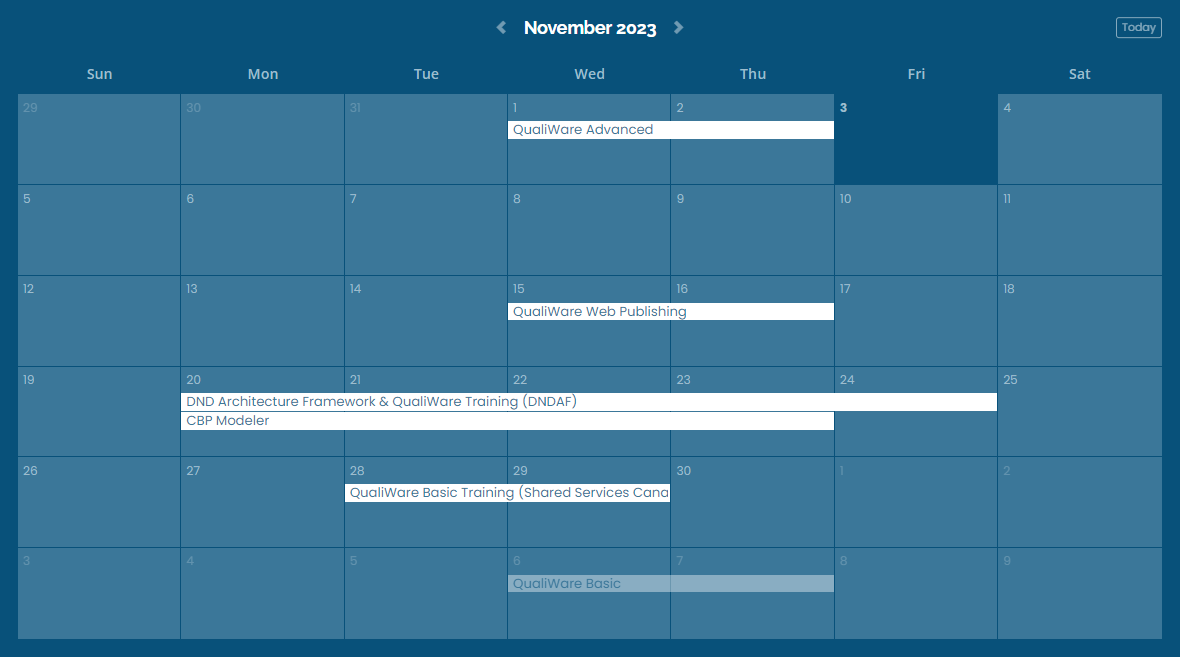Software
Services
Training & Support
Implementing Smart Manufacturing with QualiWare
January 15, 2021 3 min read


Implementing Smart Manufacturing with QualiWare
Today's economy requires quick and scalable manufacturing of small batch size products, effectively down to a batch size of one. This means that manufacturing processes need to be versatile and scalable to accommodate several different product variants or many different products. Smart Manufacturing has become known as the solution to these requirements.
Digital representation of the production system is central in smart manufacturing.
Information Management in Smart Manufacturing
The digitalization of the entire production system life cycle, including design, development, implementation, service and maintenance, allows relevant departments and enterprises to exchange the latest and most reliable information on the operation of the production system.
Such information has been circulated in various types of records, such as drawings, lists and datasheets, until now. This approach has problems, even though these records have been digitalized:
- Depending on the case, information is fragmented and sometimes even stored in various data formats used by various engineering tools.
- Information is interpreted and defined differently in different data systems (e.g. by using different denominations for the same properties or for the same data points)
- It is difficult to verify and maintain up-to-date information and can cause errors too quickly.
The traditional approach involves information re-input and conversion when used in various engineering tools, and the latest information modified in one engineering tool is not automatically reflected in another engineering tool in the same data:

The Digital Factory (DF) framework, which has been developed by IEC TC 65/WG 16 Digital Factory, is an international standard numbered IEC 62832 addressing such challenges by providing a common reference for digitization of data related to production systems. QualiWare is a member of the WG16 working group.” (Gotze).
Based on dictionaries, the standard defines common rules for using data. A data dictionary consists of computer-understandable data attributes and classifications as its basic components (CDD). A data dictionary is an ontology that offers a semantically unambiguous description of assets and properties for defining these assets.
Originally, data dictionaries were invented to provide product data and to facilitate product procurement. To provide structured explanations of their products, businesses use the meanings from dictionaries so that potential consumers understand the characteristics of the product. Dictionary-based product data provides semantically rich descriptions of products.
This approach facilitates the comparison of the characteristics of different products and the correspondence between the characteristics of the product and the original specifications, so that it can also be implemented in the workflows of device engineering.
The DF structure specifies data structuring rules using data dictionaries (not limited to CDD) that satisfy basic content citation criteria, but do not specify the data dictionaries themselves. The purpose of the DF architecture is to create a digital representation of the entire production system, known as a Digital Factory, and to make extensive use of the information in different circumstances.

The DF structure describes model elements and their rules of use for the construction and management of a digital factory, a digital representation of a production system. The DF structure is essentially a template for the development and management of a digital factory.
A Digital Factory is a digital representation of an actual or planned production system based on a computer. Its data can be exchanged and used between the different activities and software programmes of companies involved in the construction and management of the production system. During different engineering tasks, as the production system life cycle progresses, the contents are added, updated, removed, and then shared. The relationship between a Digital Factory and the activities of companies in the manufacturing systems life cycle is shown below:

A Digital Factory is a collection of DF assets each of which is representing an individual component of a real-world production system. DF asset links represent relationships between the components. A DF asset can represent not only the characteristics of the equipment in the real world but also its role. The production system’s represented component can be a part, device, machinery, and control system (Gotze).
According to John Gotze and the QualiWare Center of Excellence the Digital Factory Framework is published by IEC in three parts:
-
IEC 62832-1:2020
Industrial-process measurement, control and automation - Digital factory framework - Part 1: General principles -
IEC 62832-2:2020
Industrial-process measurement, control and automation - Digital factory framework - Part 2: Model elements -
IEC 62832-3:2020
Industrial-process measurement, control and automation - Digital factory framework - Part 3: Application of Digital Factory for life cycle management of production systems
QualiWare customers can use the QualiWare platform and its advanced UML functionality to implement the complete IEC 62832 set of standards (Gotze).
Sources
Gotze, J. (2020). Implementing Smart Manufacturing. Retrieved January 14, 2021, from https://www.qualiware.com/blog/implementing-smart-manufacturing
Leave a comment
Comments will be approved before showing up.
EA Trends: Optimizing for Value and Reducing Complexity
On January 15th, connect with SVP North America Brenda Cowie and CEO Kuno Brodersen in QualiWare's upcoming live webinar.
They will share key EA trends and market realities shaping 2026, and what they mean in practice for enterprise architects and IT leaders.


